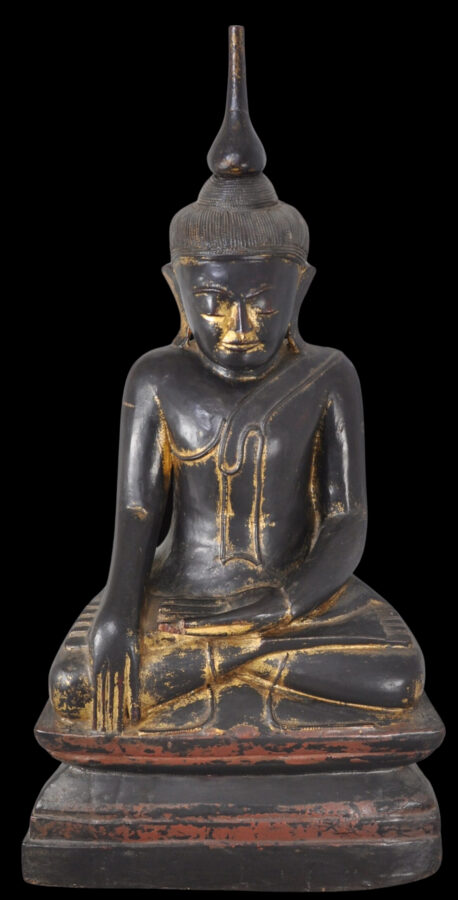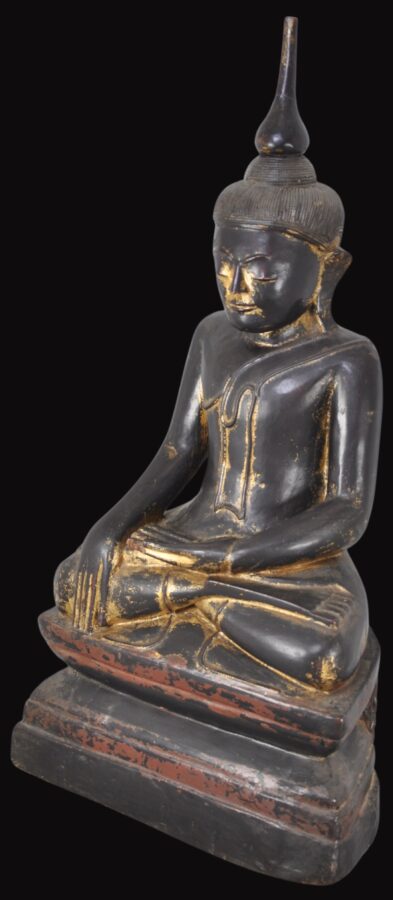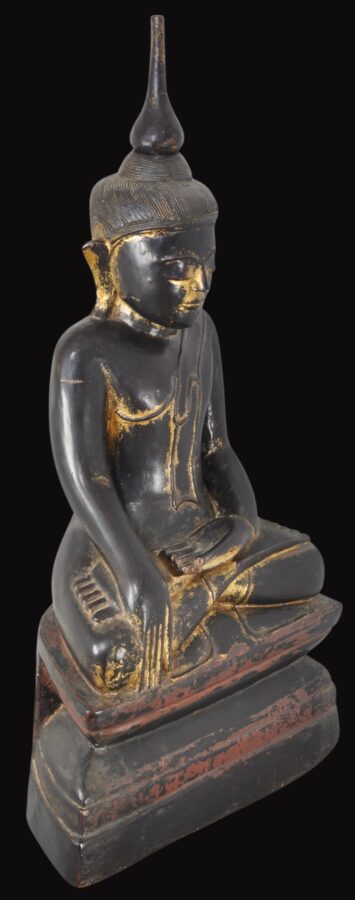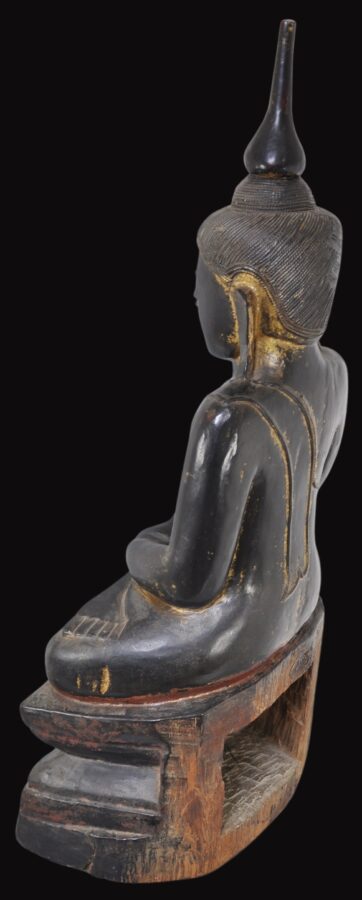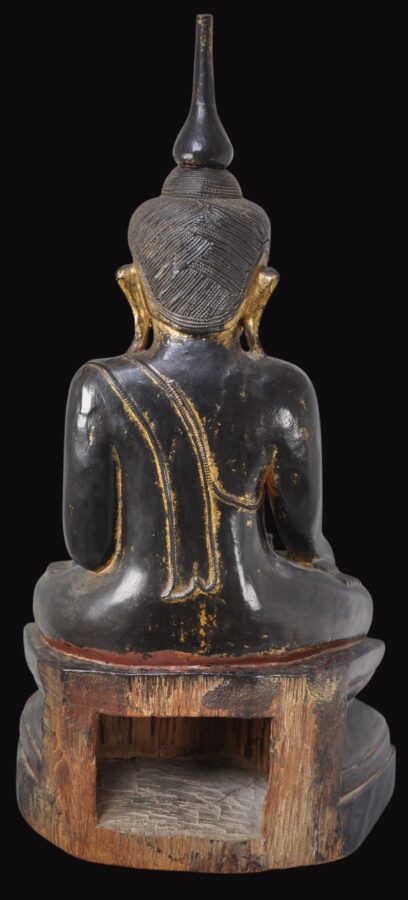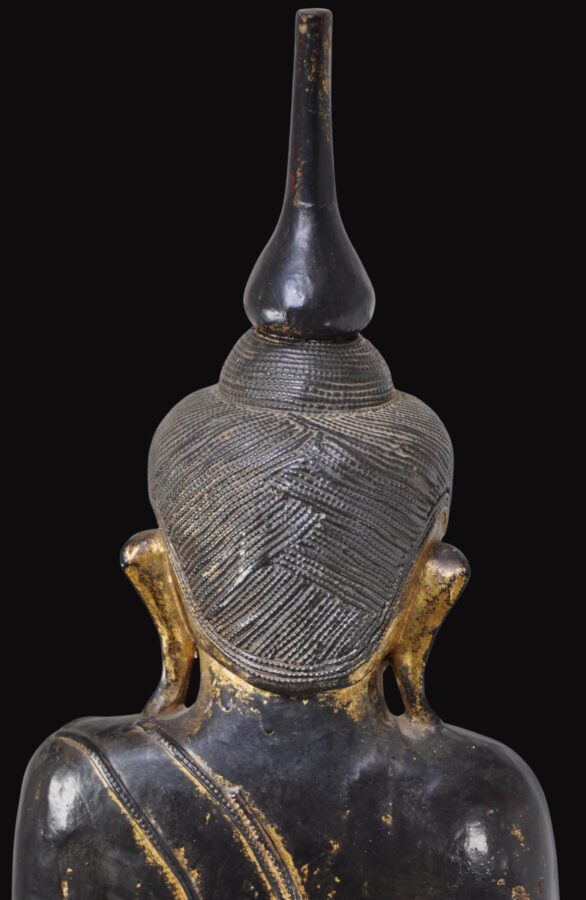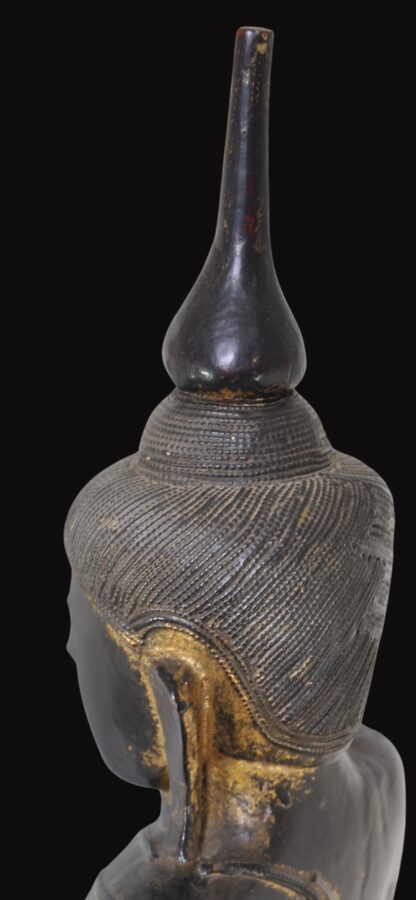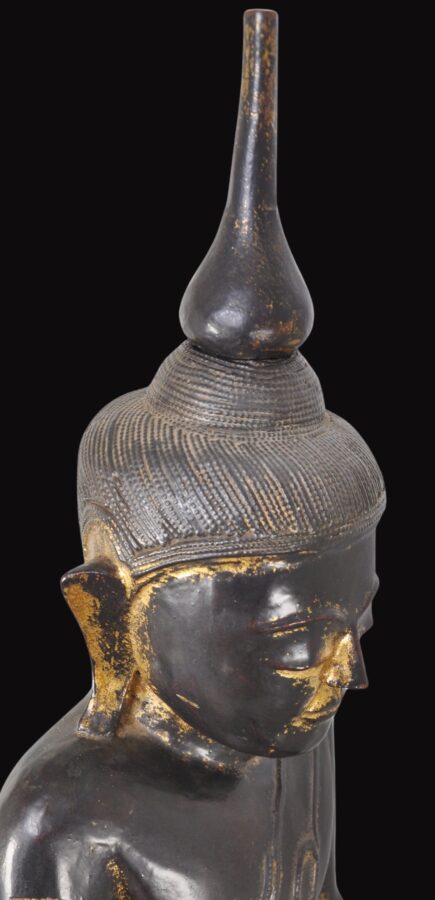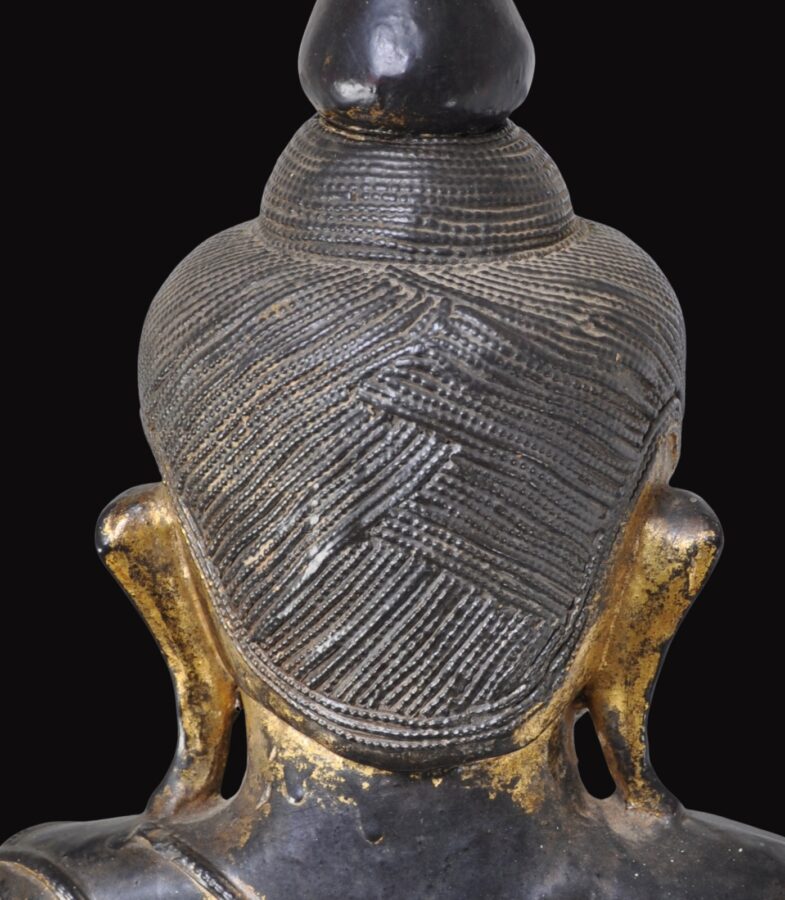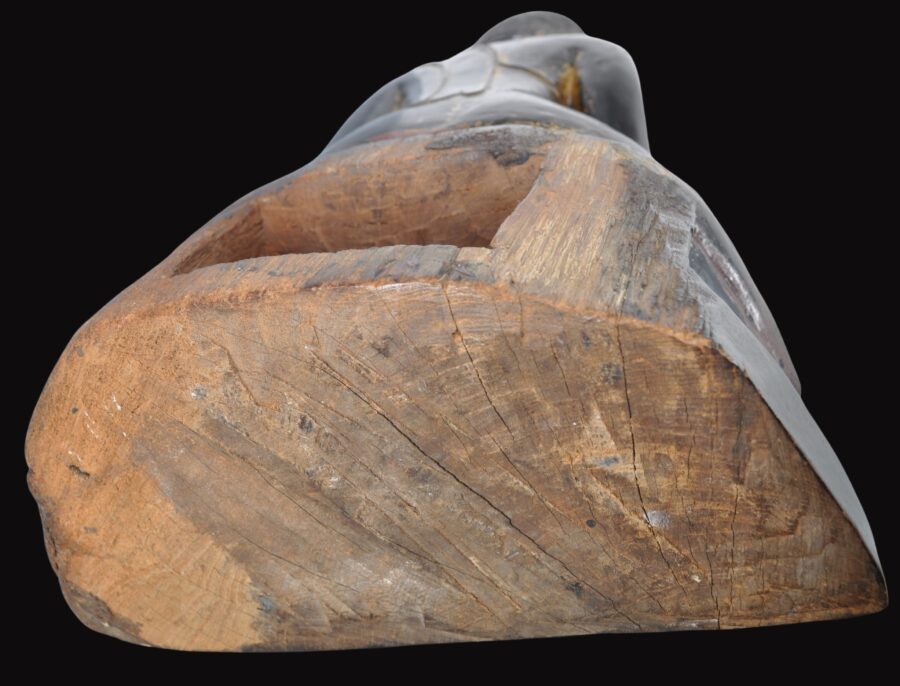Enquiry about object: 9526
Burmese Gilded, Lacquered Wooden Seated Buddha
Burma (Myanmar) 18th century
height: 61.4cm, width: 29.9cm, depth: 14.7cm
Provenance
UK art market
This elegant, seated Buddha has been carved from wood – probably teakwood – and then covered in red lacquer, then black lacquer, and then gilded. Much of the gilding has now worn away.
The image shows the Buddha seated on a waisted platform or socle, and dressed in robes with stylised folds and pleating. Such a schematic representation is consistent with a dating of the 18th century and earlier. The robes cover the left shoulder but leave the right bare.
The face has a drawn-down gaze, and an aquiline nose. The ears are elongated and those of a prince. The face is approximately triangular, reflecting the last remnants of the Pagan style.
The cranial protuberance (unisha) is rounded and surmounted by a tall, elongated lotus bud-like finial.
The hair has been represented beautifully, and indeed is one of the most attractive and interesting features of this image – the hair seems to have been pulled tight over the head and then wrapped into a bun on top to make the unisha.
The feet and the hands are large and distinctive, in keeping with an 18th century dating.
The image shows the Buddha seated in vajrasana, with his right hand gesturing to the earth in the bhumisparsa mudra position. It is probably the most characteristic form of religious sculpture in Burma (Lowry, 1974). The posture, known as ‘calling the earth to witness’, represents the moment when the Buddha was seated in meditation under the Bodhi tree during the evening before his enlightenment. Mara asked him to name anyone who would give evidence that he had given alms, and the Buddha motioned to the earth with his right hand and said that the earth would bear witness to that – in a previous incarnation when he was known as Vessantara, he had given alms to such an extent that the earth had begun to quake.
The reverse of the socle has a large cavity or niche in which precious sacred items or relics might have been kept.
The image is in very fine condition. The thumb on the right hand has lost its tip but otherwise all is intact. The image sits evenly and solidly. Most probably it came to the UK during colonial times. It is beautiful and decorative.
References
Fraser-Lu, S., Burmese Lacquerware, White Orchid Books, 2000.
Fraser-Lu, S., & D.M. Stadtner, Buddhist Art of Myanmar, Asia Society Museum, 2015.
Karow, O., Burmese Buddhist Sculpture: The Johan Moger Collection, White Lotus, 1991.
Green, A., & T.R. Blurton (eds.), Burma: Art and Archaeology, The British Museum Press, 2002.
Lowry, J., Burmese Art, Victoria and Albert Museum, 1974.


